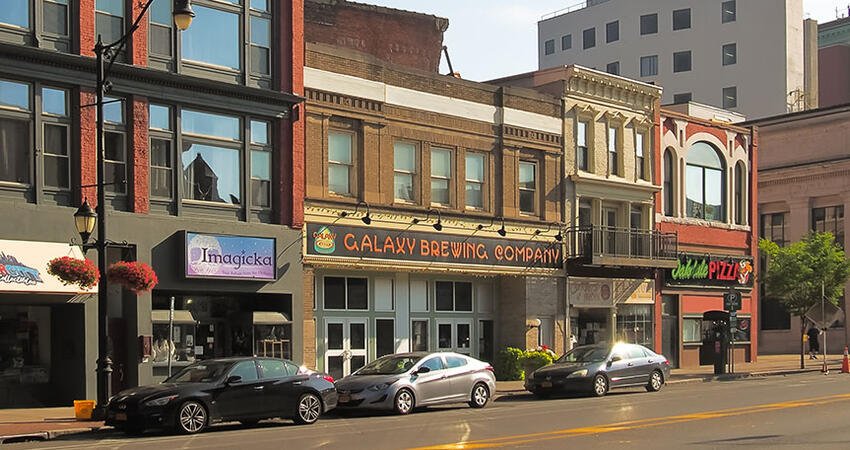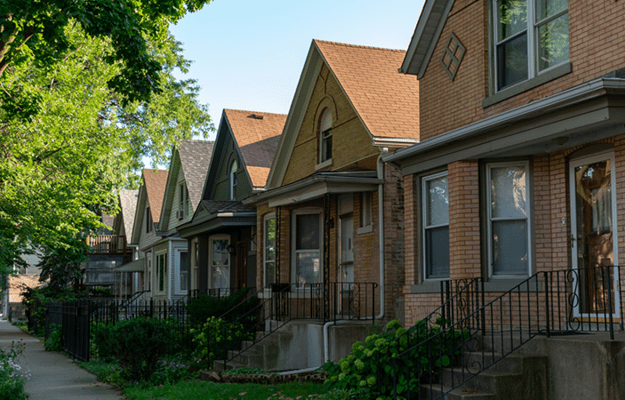
Stabilizing Neighborhoods through Strategic Code Enforcement
by Joe Schilling
Vacant properties, substandard housing, and neighborhood quality profoundly affect our health, education, and safety. Strategic code enforcement programs can serve as communities’ first line of defense for addressing deteriorating homes, vacant properties, and neighborhood decline. Strategic code enforcement programs organize critical assets, resources, and actions into a dynamic and adaptive system.
Code enforcement today is more complex and more difficult because of rapidly changing market, housing, and neighborhood dynamics. Many code enforcement agencies are still addressing the spillover effects from the mortgage foreclosure crisis but often with fewer resources and staff. Transforming current agencies and programs takes patience, strong leadership, creative management, and technical support. New York State’s Cities RISE initiative offers other state and local governments a comprehensive model for building the capacity of their code enforcement agencies to rehabilitate substandard housing and stabilize neighborhoods.
Lessons from New York State’s Cities RISE initiative
Two years ago, New York State embarked on an ambitious journey to expand the code enforcement capacities of 16 municipalities through a new initiative: Cities for Responsible Investment and Strategic Enforcement (Cities RISE). The New York Attorney General’s (NY AG’s) $12 million, two-year program to establish Cities RISE, combined with nearly $13 million to create the Zombie Remediation and Prevention Initiative, represents one of the largest single investments in local code enforcement, neighborhood stabilization, and vacant property programs by any state government.
These resources came from the NY AG’s settlement with large financial institutions that contributed to the collapse of the housing market; leveraging these settlement monies to address the gaps in local code enforcement made perfect sense, considering the tireless work that many cities and towns, and community organizers, did (and are still doing) to identify, track, and abate vacant and foreclosed “zombie” homes. National community development intermediary Enterprise Community Partners and the Local Initiatives Support Corporations have been integral to managing and coordinating both programs.
Cities RISE builds code enforcement capacity by incorporating three fundamental components of the strategic code enforcement model.
- Data integration and analytics: The backbone for Cities RISE’s focus on data capacity features a two-year license for each municipality to a cloud-based platform specifically designed for code enforcement data. Over the past 18 months, consultants have helped each municipality customize the platform’s capacities to collect, coordinate, and synthesize a wide variety of real property, tax, utility, housing, neighborhood, and case management data. This was no simple feat, given that different agencies and departments independently manage these data sets, often using different software, which makes it difficult to share information.
Cities such as Albany, Rochester, and Binghamton used the data platform to improve their efficiency in identifying and selecting vacant properties for inspections, code enforcement, and demolition. Other cities, such as Elmira and Irondequoit, leveraged the new data capacity to improve their rental housing and vacant property registration programs.
- Equitable policies and practices: Too often, code enforcement agencies focus on strict administration and enforcement of state and local housing codes with little acknowledgement or understanding of the unequal effect that targeted code enforcement actions can have on vulnerable people, such as low-income tenants of color who are housing insecure and rent burdened. Displacement driven by legitimate code enforcement actions is a real concern in many cities throughout New York as rents and redevelopment increase the pressure for neighborhood change and gentrification.
To help code enforcement agencies minimize displacement, in the first phase of Cities RISE, Enterprise held training sessions and webinars that explored the relationship of race and equity for code enforcers through the lens of the Fair Housing Act and related housing and community development topics. Several cities applied to improve equity in code enforcement. For example, Syracuse piloted a program that brought together tenants and owners and landlords, Niagara Falls launched an anti-slumlord initiative, and White Plains conducted surveys of tenants to inform future decision-making.
- Community engagement and collaboration: Local code enforcement agencies cannot effectively tackle vacant properties and zombie homes on their own; they must work across agencies and with community and nonprofit partners. Engagement and collaboration serve as the connective tissue of the Cities RISE structure and technical assistance.
Many participants leveraged their Cities RISE resources and official designation to encourage departments and outside agencies to share information and data and collaborate on vacant and distressed properties. A few municipalities, such as Albany, expanded their vacant buildings task forces, while other communities, such as Binghamton, leveraged these early cross-sector conversations to plan code sweeps by council districts. Key collaborations also emerged with county land banks, such as those in Elmira, and the local zombie-housing working groups and task forces.
The promise of Cities RISE
Cities RISE illustrates the scale and scope of transforming current code enforcement agencies, programs, and practices. Its blend of data, technical assistance, leadership, engagement, equity, and collaboration reflect its solid foundation of the strategic code enforcement model’s core components. It equips participating municipalities with the strategies and resources that build short-term capacities, which are already improving effectiveness of their code enforcement programs, policies, and practices. In doing so, Cities RISE helps municipal governments recognize the broader effects code enforcement actions can have on communities.
The second phase of Cities RISE, announced in September 2018, provides in-depth leadership training, community engagement assistance, and convening opportunities to 10 of the original 16 cities. Municipalities will come together in the summer of 2019 through a special innovation field lab through Harvard’s Ash Center to discuss common problems, devise more robust code enforcement action plans, and facilitate peer learning. The community engagement assistance will include development and support for local stakeholder advisory boards. Municipalities can also compete for innovation grants of up to $1 million to implement and scale different aspects of their code enforcement action plans.
As the initiative continues, it must address an outstanding challenge: how to measure and track the effects of these reforms over time. This accomplishment would help ensure that these changes become institutionalized in each community so that strategic code enforcement becomes the norm and not the exception. It will be critical to scale Cities RISE’s effects by developing alternative vehicles and pathways to help New York municipalities—and other cities throughout the United States—learn from their Cities RISE peers.
Overall, Cities RISE offers local, state, and philanthropic leaders with a model for helping communities address vacant properties and declining neighborhoods.
Author Joe Schilling serves as a member of the Senior Advisory Team for Cities RISE
Photo by debra millet/Shutterstock


